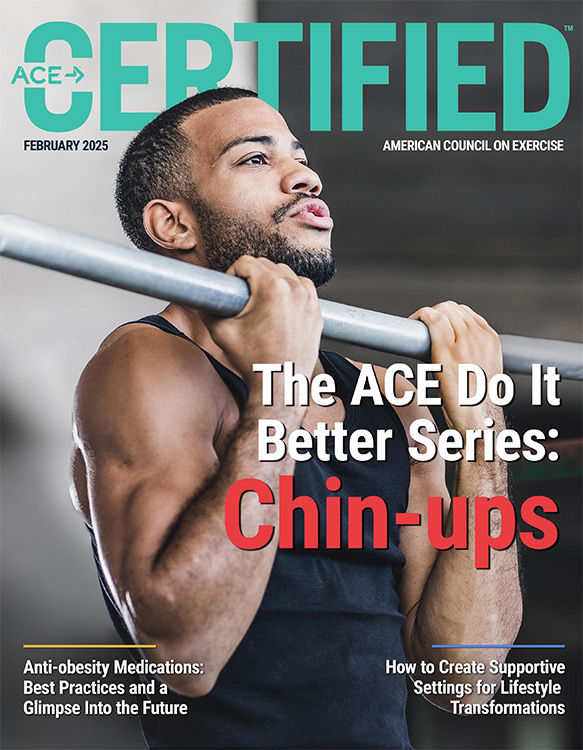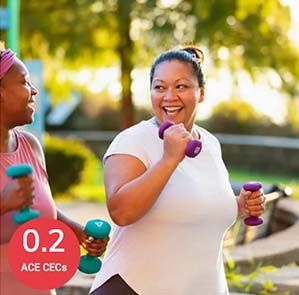
Anti-obesity medications, including Ozempic, Mounjaro and Wegovy, have been one of the hottest topics in the health and fitness space for some time now—not to mention showing up in nearly every commercial break and pop-up ad. We’re sure you and your clients have questions, as there is a lot of conflicting and confusing information out there. To help make sense of things, we reached out to a leading expert who can share up-to-date insights and evidence-based information on what we currently know about these medications and how they might impact your work as a health coach or exercise professional.
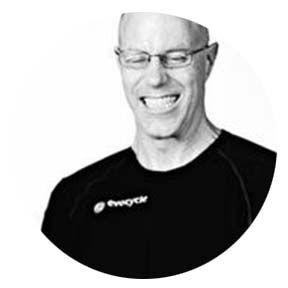
Michael Hosking, PhD, is the Creator of Revocycle Mind and Body Cycling, a mindfulness-based indoor cycling brand that teaches meditative movement for mental health and holistic well-being. He is a former competitive cyclist, was a professor of biology at Davidson College and Indiana University, and is the creator of the Mastermind Group for Obesity Medications in Fitness, an interdisciplinary professional development community for healthcare professionals who work with weight-loss medications and patients taking them, as well as for fitness industry leaders and executives.
In this wide-ranging Q&A, we speak to Dr. Hosking about current best practices for working with individuals taking anti-obesity medications, what the research has revealed about exercise programming, and what the future may hold for the fitness industry and for individual health coaches and exercise professionals.
ACE: To begin, please tell me a little bit about the work you’re doing as it relates to anti-obesity medications.
Dr. Hosking: I believe that we are at a critical moment in our industry, and in society, with the rise of the incretin mimetics (GLP-1s, plus others). [Editor’s note: Collectively, these medications are called anti-obesity medications (AOMs) and will be referred to as such throughout this article.] These medications hold the potential to profoundly influence our society. There are many AOMs in the drug-development pipeline at this moment, and as other benefits to these medications are discovered, they will be even more widely prescribed for diabetes, obesity and other conditions.
For nearly every AOM prescribed for obesity treatment, there are recommendations on the drug label from the U.S. Food and Drug Administration stating that the patient should also receive nutritional and exercise counseling. Therefore, many healthcare providers will be urging patients to exercise, and potentially recommending they go to a gym and get personal training.
Fitness and medicine, after decades of dancing around each other, are now crashing into each other. I’m concerned about the culture of fitness and that the education level of exercise professionals is often not equal to that of allied health professionals or pharmacists who regularly, as a part of their professions, interface with medicine. Allied health professionals and pharmacists are highly trained and often must pass national board certifications; they are trained in, and comfortable with, communicating with medical providers. Medical providers are comfortable working with these professionals and giving them autonomy and control.
Exercise professionals have not typically had this high-level training. Yet, we are placing ourselves on the continuum of care for patients taking AOMs in a way that is similar to pharmacists or physical therapists.
We know that medical providers have not typically given exercise prescriptions in large numbers to their patients over the last several decades. The reasons are varied and complex, but a lack of trust in the fitness industry is certainly among them. I think we need to build this trust through enhanced education of exercise professionals, specifically in the science of AOMs, the body systems they impact, their side-effects and impacts on training, and the lived experience of people with obesity.
My mastermind group brings professionals who work with the AOMS and/or patients in research and clinical practice into a single learning community to share knowledge and insights across disciplinary silos. We currently have medical experts (MD, DO and PhD) registered dietitian nutritionists (RDN); public health experts (DPH and MPH) and individuals with advanced exercise science/physiology degrees… all in one place. And the concept is to then bring in fitness industry executives and leaders to learn from the experts and share their own experiences. The goal is to chart a healthy path forward for both the patients and the industry.
My reasons for the mastermind group are twofold. The industry has never penetrated more than 20 to 25% of the total available market, so if we can welcome in patients with obesity who are taking AOMs, make them comfortable and help them create a lifetime habit of exercise for health and happiness, we can greatly expand the industry. More importantly, we can change the lives of millions of people who would not otherwise be in our gyms and clubs and/or who are not exercising. This is a huge opportunity and a critical moment.
ACE: What are your thoughts about what some of the health club chains are doing in this space (for example, designing exercise programs for people taking the medications or even acquiring weight-loss clinics with doctors who can prescribe them)? Do you think this is a positive or negative development for the fitness industry and for patients?
Dr. Hosking: If we approach this properly, it can be a huge positive for the industry.
My concern is that gyms and clubs are seeing an opportunity to create a new revenue stream without taking into consideration that this is a really different, and unique, population they’re trying to reach. Therefore, I see it as both an opportunity and, perhaps, a moment for reflection.
The rise of these medications is absolutely an opportunity for the industry to grow beyond what has been, as all of us in the industry know, a pretty niche market of about 20 to 25% of the population. This number has been stable for decades now, through all the different fads that have come and gone in fitness, which means that we are mostly churning the same customers through different trends rather than expanding the market.
I believe that with the rise of AOMs and our desire to get people taking them into the clubs and gyms, we need to reflect on our values and practices, as well as our messaging and marketing. When 100% of your potential market knows that your service is good for them—good for their health—and yet 80% of them don’t use your services, it seems to me it would serve the industry well to try to understand why that is. I think the industry has attempted to come to grips with this issue, but I’m not convinced they have seen it clearly. Certainly, whatever they’ve done over the past 30 years or more hasn’t shifted that percentage.
Fitness is a culture, and a culture tends to be very self-referential. Culture is a mix of shared beliefs, values, practices, language…even clothing, music, food and drink. Those within it feel very comfortable, but it feels foreign to those not inside of it.
I believe that fitness, as a culture, has failed to understand the why of the 80/20 market penetration problem precisely because those who are drawn into the culture of fitness—to work in it or use its services as clients—share certain values and therefore do not see and experience the industry in the way the 80% do.
This brings us to the need for a conversation about how our marketing and messaging, as well as delivery of services, appeals to the 20%, but not the 80%. Take for example, popular fitness motivational lines like, “We all have the same 24 hours in a day,” “If you want it, you’ll work for it” or “Choose your hard.” These are shaming phrases meant to imply that people who don’t go to gyms are lazy, bad at time management, don’t want a hot body (which is probably true, as most people don’t care about hot bodies and Instagram selfies), or are afraid of hard work. These messages may be effective for what we call fitness converts—people who don’t need to be convinced of the value of exercise—but they clearly are not effective at attracting the 80% of those who don’t regularly go to gyms and clubs. And we know from psychology that shame is not an effective motivator for building lifelong well-being habits.
The very people taking AOMs are perhaps least likely to resonate with fitness culture and messaging. Renee Rogers, PhD, who is a member of the Mastermind Group and a senior scientist at the University of Kanas, has found that a large majority of people taking AOMs have tried many gyms, programs and potentially even worked with personal trainers.
So, I think we need to seriously consider, first, the culture of fitness and its messaging and marketing, and then realign what we are doing and how we are doing it with a more health-centered, holistic, well-being–focused approach that doesn’t center on extrinsic rewards and “summer’s coming” promotions, but instead talks about, promotes and delivers services that are more inclusive and oriented to whole-person health, longevity, metabolic health and well-being.
This kind of messaging—and the culture shift that must accompany it and inform it—will be more appealing to people taking AOMs and therefore is an opportunity to both grow the industry and help a whole lot of people—again, if we approach this properly.
ACE: What are some things to consider when working with clients taking AOMs?
Dr. Hosking: We must first consider that a person who is taking AOMs either has a body mass index (BMI) of 27 kg/m2 or higher and an associated condition or has a BMI of 30 kg/m2 or above to qualify for the medication. (I would like to note that there is a great deal of concern about the BMI measurement itself, its history, whether it’s scientifically legitimate, etc., but this is the measure being used to diagnose and prescribe). By definition, these individuals have a serious and complex metabolic disease, not to mention possible psychological concerns that may contribute to, or result from, having obesity.
So, the first thing I tell people is that these are no longer clients in the fitness space, they are “patients.” And, therefore, I believe we must approach these “patients” with the same level of knowledge and professionalism as that of allied health professionals (physical therapists, pharmacists, respiratory therapists, etc.). I recognize that we are not there at the moment, but we absolutely can uplevel our industry, and in the process become a trusted part of the healthcare continuum. This is a major part of my work now, and of the mastermind community I’m building.
Individuals with obesity may have challenges in their musculoskeletal system beyond those of the typical gym population; it has been reported that people with obesity have a higher incidence of clinical musculoskeletal problems, including tendinopathy (inelasticity, reduced fiber sliding), which means that we absolutely must think about load management—i.e., the stress put on the tendons—differently when working with these individuals.
Obesity is highly correlated with inflammation markers in the body, and inflammation is associated with joint deterioration and osteoarthritis. And, although it has previously been thought that obesity boosts bone mineral density, there is new research that indicates obesity may contribute to reduced bone mineral density in certain groups relative to body size. In addition, obesity is well-understood to be associated with a reduction in function of the existing muscles due to inflammation and/or intramuscular fat. Therefore, we absolutely must consider musculoskeletal challenges when working with these patients—muscle function, joint health, tendon strength and elasticity, and bone density—and this includes evaluating and accommodating mobility limitations. Of course, proper evaluation is important with any client.
Now, when individuals with obesity start taking AOMs, we have two levels to think about: the side effects of the medications themselves and the direct effects of taking the medications. Common side effects include nausea, vomiting, diarrhea and constipation (in up to 50% of patients) and more serious, but thankfully more rare, complications like pancreatitis, intestinal obstruction or gastroparesis. Direct effects include the possibility of hypoglycemia and nutrient deficiencies—and resulting lack of energy—due to both eating less (as a result of the reduction in appetite cues from the medications) and slowed gut motility.
ACE: What is the most current research telling us about exercise programming for people taking anti-obesity medications? Is the idea that these individuals need to focus on resistance training supported by the evidence?
Dr. Hosking: When it comes to exercise programming for individuals taking anti-obesity medications, it’s essential to define key terminology, as some important definitions are getting confused and misused in the popular press when discussing AOMs. When body weight is lost—whether it results from taking AOMs, following a very-low-calorie diet, through exercise or through a combination of those approaches—part of that loss is lean tissue mass (or fat-free mass), and a subset of that lean tissue mass loss is skeletal muscle mass.
Fat Mass vs. Fat-free Mass
Fat-free mass = Bones + Lean tissue mass
Lean tissue mass = Skeletal muscles + Connective tissue + Organs + Water
Note that skeletal muscle mass is a portion/subset of lean tissue mass.
The big concern in the press, and in the industry, is the loss of skeletal muscle mass when taking the medications, but they are often getting that confused with lean tissue mass loss. They are not the same. You will see people talking about lean tissue mass loss as if it is 100% skeletal muscle. It is not.
Reviews have shown that body composition is generally improved by the weight loss from taking AOMs (i.e., there is a higher percentage of fat loss than lean tissue mass or fat-free mass, but, of course, a percentage of the lean tissue loss is skeletal muscle). The question is really whether this is problematic or not.
The percentage of weight loss on the medications that is lean tissue mass is estimated in two major trials to be approximately 39% (the STEP 1 and SUSTAIN 8 trials) of total body-weight loss. The percentages vary in different studies depending on methodologies used to measure body composition.
The percentage of overall weight loss that is skeletal muscle mass loss is less clear. Best estimates are approximately 10% of total body mass lost. But remember, body composition is generally improved on the medications because fat mass is lost at a higher rate than lean tissue mass.
Finally, to add even more confusion, there are some indications, but nothing yet conclusive, that physical function actually improves with AOM treatment, which speaks indirectly to the functioning of the skeletal muscles. A review in Diabetes, Obesity and Metabolism points out that, “One important question is whether the loss of muscle mass associated with weight loss treatments is adaptive (i.e., a physiological response to weight loss maintaining or minimally affecting muscle health/function), or maladaptive (i.e., adversely impacting muscle health/function).” That is to say, with decreased body mass, perhaps the muscle mass decreases and muscle quality increases in an adaptive way to maintain or even increase function.
We simply do not yet have a good handle on all the issues here with respect to the loss of lean tissue mass and muscle mass, quantity versus quality (of muscle tissue), and functioning of muscles when weight loss is effectuated with AOMs.
ACE: How would you summarize best practices and standard of care for health coaches and exercise professionals working with clients taking anti-obesity medications? Should they modify their approach? If so, how?
Dr. Hosking: Here’s what we know: skeletal muscle mass is important for health. We know that muscle tissue is important in glucose metabolism, energy regulation and insulin sensitivity. Muscle mass, of course, contributes to mobility and quality of life, and reduced muscle mass is an independent risk factor for all-cause mortality and cardiovascular mortality.
So, all this being said, I would agree that exercising to both maintain muscle mass and improve muscle quality are worthy goals when working with people taking AOMs, for three reasons:
Muscle tissue is a profoundly important part of energy homeostasis in the body (helping to balance blood glucose levels and stored glycogen), is metabolically active and contributes significantly to basal metabolic rate, which is central to the metabolic issues underlying obesity and the loss of excess weight on the AOMs.
Skeletal muscle tissue functions as an important endocrine organ in the body. Working muscles release health-promoting signaling molecules called myokines. These myokines influence every major organ system in the body and are only now being understood as an important link between exercise and health/longevity.
And, of course, muscle health and strength are essential to good physical functioning and fall prevention.
In a 2017 review paper, Cava, Yeat and Mittendorfer found (among other key findings):
Diet-induced weight loss (not via AOMs) reduced muscle mass but not muscle strength.
Both endurance training and resistance training preserved muscle mass, and resistance training increased strength, in patients with obesity undergoing weight loss.
You’ll notice that these reasons are the same whether a person loses weight through AOMs or lifestyle change. Muscle health and muscle mass equate to better health.
Given that a significant percentage of individuals taking AOMs will stop taking the medications, often within six months to a year, I tend to believe that the very best thing we as an industry and as exercise professionals can do for them is not talk at all about muscle building, lean tissue, fat mass, etc., and perhaps decenter weight loss and BMI. I believe the best thing we can do is ease them into exercise, give them a sense of control and understanding, as well as comfort and confidence, with exercise and the facilities in which it is done. And, give them the gift of noticing intrinsic rewards from movement, independent of any weight loss or body changes. As I often say, exercise, even without weight loss, is still healthy.
With this approach in place, people will be much more likely to maintain their programs and, as this multi-year study shows, even if they do stop taking the medications, they are likely to maintain a higher percentage of their weight loss and body-composition changes.
ACE: Popular media often focuses on the need for an increase in protein intake for people taking AOMs. Is this advice true based on the current evidence?
Dr. Hosking: In terms of nutrition, obesity dietitians note that these individuals will generally be eating less and could experience some malnutrition.
The recommended protein dietary allowance (RDA) for average Americans is 0.8 g/kg body weight. Previous research with patients undergoing rapid weight loss through bariatric surgery or a very-low-calorie diet recommends from 1.2 g/kg up to 1.5 g/kg dietary protein, especially for older adults who are more at risk for sarcopenia. Following nutritional guidelines for people on very-low-calorie diets makes sense in this situation.
It’s important to point out that while many RDNs or medical providers may recommend protein or other supplements for those taking AOMs, we are decidedly in the medical arena with AOM patients and therefore dietary recommendations of this kind are beyond the scope of practice of most health coaches and exercise professionals. This highlights the need for a collaborative, interdisciplinary approach when working with these individuals.
ACE: Do you have any words of advice for health coaches and exercise professionals who may be nervous about the continued emergence of AOMs and struggling with how to motivate clients who find themselves losing weight without exercise—and who may even find themselves questioning the need to exercise at all?
Dr. Hosking: We in the fitness industry have, for a long time, thought of our services as a way to change how the body looks—build a booty, get a six pack, get ready for summer, rock the dress, shedding for the wedding, bikini season—and that’s how we’ve marketed and messaged our services. We focused on the extrinsic rewards of how the body looks as the goal of exercise. We haven’t centered the many, many health benefits of movement, physical and mental, that have nothing to do with how the body looks.
So now, when we see patients taking these medications to lose weight, perhaps even in place of exercise, there is a tendency in our industry to view them as lazy or unmotivated, taking the easy way out. This is not going to grow our industry, or benefit these patients.
I’ll repeat here that exercise without weight loss is still healthy, and that exercise isn’t all about weight loss, or even mostly about weight loss. Exercise is simply the best possible thing we can do for our physical and mental health, our holistic well-being, and I think we need to center this in our work with individuals taking AOMs. Yes, we can track weight loss with them, yes we can monitor BMI or body-composition changes with them, but it is very likely that at some point they will stop taking the medications, or simply plateau on them. If we have positioned exercise solely as the way to help lose weight while on the medications, we risk losing them if they stop taking the medications.
There is a great deal that we do not know right now in the rush to incorporate AOMs into fitness, and a lot of assumptions being made in response to the highly publicized popular press articles on reduced lean tissue mass in people who are on the AOMs. But as we’ve seen, there is a great deal of uncertainty about how much lean tissue mass is lost, how much of the lean tissue mass lost is skeletal muscle, if these losses are fundamentally different from those on a very-low-calorie diet, and whether any muscle loss is counterbalanced by improved muscle health and function. John Jakicic, PhD, and Renee Rogers, PhD, both of the University of Kansas Medical Center, are leading the way in calling our attention to what we know, and don’t know, at this moment, and I recommend readers follow their work.
Maintaining or building muscle mass can be important when working with people on the medications, as it is for anyone. Aerobic conditioning is also important for people on the AOM medications, as it is for anyone.
I would argue that with individuals taking the AOMs, the standard physical activity guidelines of at least 150 minutes/week moderate aerobic activity and resistance training at least two times per week should be the ultimate goal, but with the important caveat that these are generally deconditioned people and we’ll need to work up to the standards bit by bit. This is really great in that we can establish attainable goals and reinforce the exercise practice by reaching, and celebrating, these goals. And, over time, we can work toward meeting the physical activity benchmarks. While there are currently no evidence-based guidelines specific to people taking AOMs, following public health guidelines is a good place to start. Anything is better than nothing, and small, reachable goals are highly effective in building well-being habits.
The key, in my opinion, is the way we message and market to this population, and how we greet them and deliver our services. In centering the holistic health benefits of exercise, and teaching the intrinsic rewards of movement, we have the opportunity to grow our industry, create lifetime customers and profoundly benefit the health of millions of people.
Expand Your Knowledge
A Guide for Supporting Clients on Anti-obesity Medications
This course equips health and exercise professionals with the essential knowledge and skills to confidently support clients taking anti-obesity medications (AOMs). Through interactive video content and practical activities, you’ll gain a comprehensive understanding of the physiological effects of AOMs, common client challenges, and evidence-based programming strategies to enhance adherence and optimize outcomes. Additionally, the course addresses biases and misconceptions surrounding AOMs within the fitness industry, promoting a client-centered approach. Authored by Renee J. Rogers, PhD, FACSM, and Mike Hansen, CPT, the course highlights the impact of AOMs on clients and the broader health and fitness landscape, empowering professionals to navigate this evolving domain effectively.

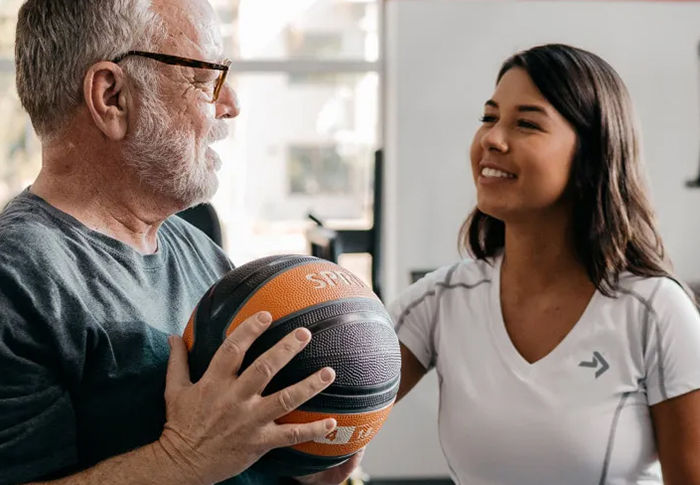
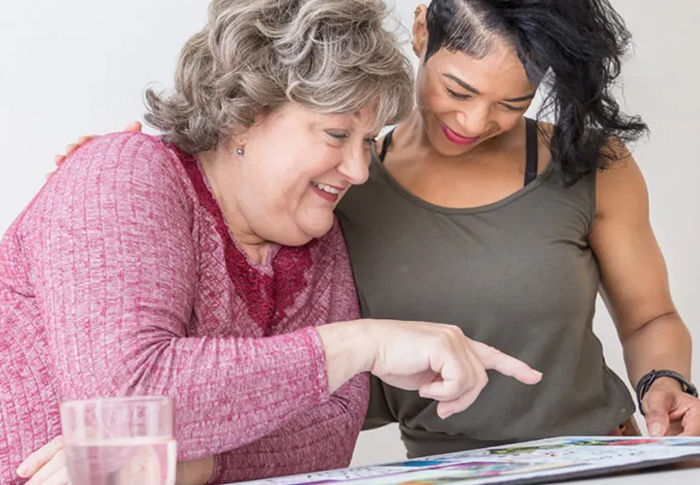
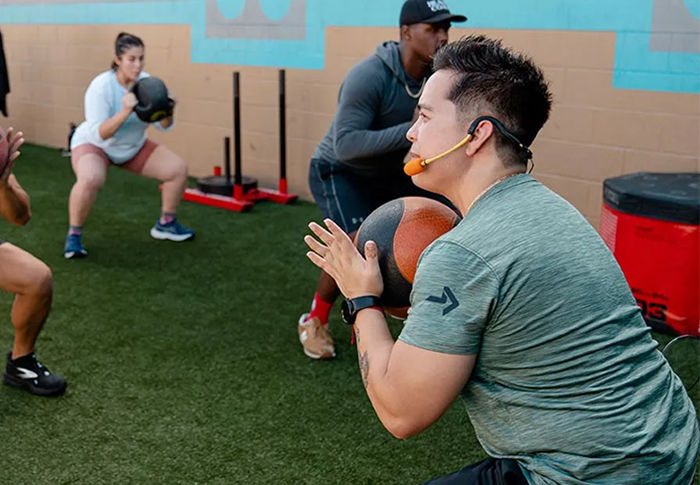
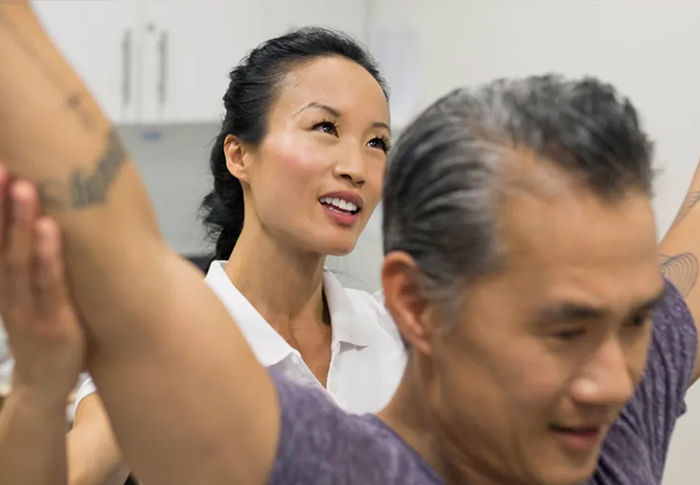
 by
by 